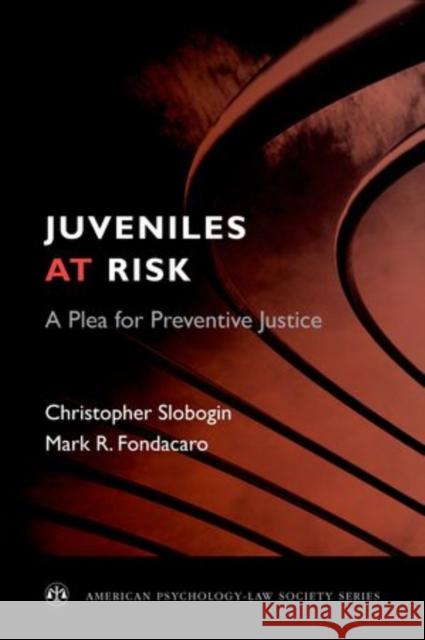Juveniles at Risk: A Plea for Preventive Justice » książka
Juveniles at Risk: A Plea for Preventive Justice
ISBN-13: 9780199778355 / Angielski / Twarda / 2011 / 224 str.
First established at the end of the 19th century, the juvenile justice system has long been searching for an effective set of guiding principles. Over the last hundred years, through a series of piecemeal rulings, it has undergone an evolution from its original foundation on the rehabilitation model to the current "get-tough" system that increasingly treats juvenile offenders as adults. At present, there is no overarching theory or model of juvenile justice intervention in this nation or even in any given state. Juvenile justice policy is best characterized as a helter-skelter array, inconsistent across jurisdictions, with no overarching theoretical framework providing guidance. Indeed, the field is desperately in need of a coherent model to serve as a guide to policymaking.
In recent years, substantial gains have been made in the relevant knowledge on juveniles and offender treatment. We know more about the cognition and functioning of minors generally, and juvenile offenders specifically, as well as about how they respond to different types of interventions. Public attitudes have softened since the height of the "get-tough" era, and many policymakers are open to new ideas as they recognize that the current system just isn't effective. In this book, Slobogin and Fondacaro present their vision for a new juvenile justice system, founded on the evidence at hand and promoting the principles of rehabilitation and reintegration into society. The authors develop their juvenile justice policy proposals effectively by carefully addressing the problems with past policy approches and recent theoretical contributions, the science underlying the new perspective to be elucidated in the book and how that science informs the authors' perspectives. Most helpfully, they provide a detailed description of the proposed new model along with discussion of the procedural rules that should accompany its implementation, and articulation of the way in which the model would work in practice. For researchers and policymakers involved in juvenile justice, this book is a call to arms and a model for future developments.










